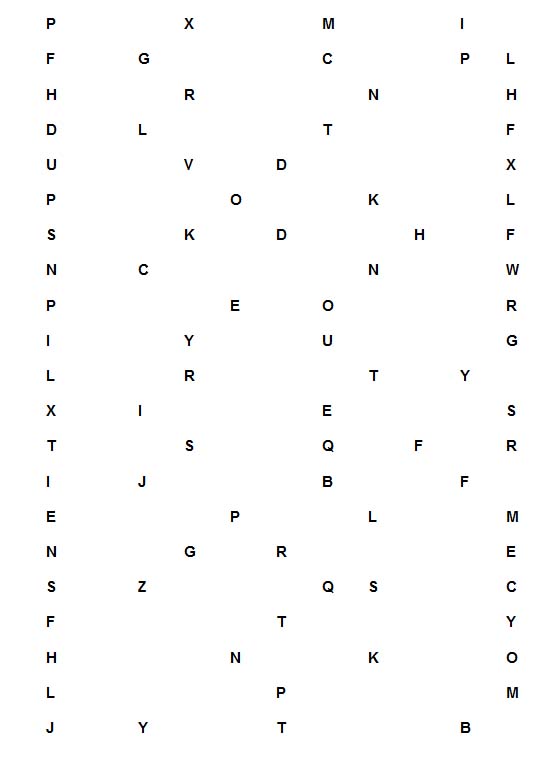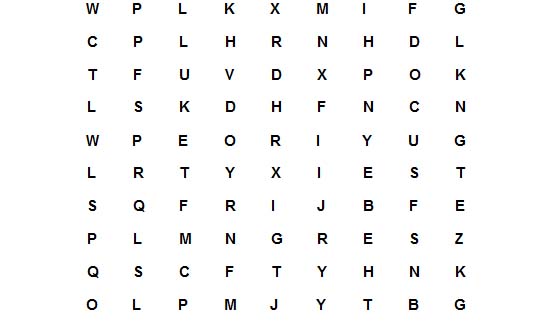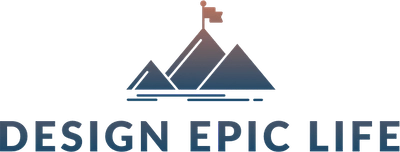How To Educate Yourself: Get The Most Out Of Reading In Less Time
There are three kinds of people in the world:
- Those who educate themselves and take action to make their lives or themselves better.
- Those who jump from one article to another making no changes in their lives.
- Those who don’t give a damn about self-education. They have no urge to click on self-help titles. Even if they somehow stumble upon such articles, they would read as if it is written in an alien language for an alien population.
This post is for people who are either in the first or second category. I used to be in the second category until I applied the methods mentioned in the post.
I cover how to educate yourself by reading and retaining the most important information in self-help materials (audio, video, text). Then, I go on to explain how to make a system to apply what you learn.
Table Of Contents
Step 1: Hunt Useful Articles To Educate Yourself
Step 2: Optimize Your Reading Experience And Save Time
Step 3: Remember And Apply The Information
Step 1: Hunt Useful Articles To Educate Yourself
I have a system for finding the best articles to read. For that, I have unsubscribed and stopped reading from the places which are not making much impact on my life.
There are millions of articles published every day. The fear of missing out stays there but I have learned to let it go.
If I want to read every single post on a blog, then I subscribe to the newsletters to never miss an update. For the blogs that I like but don’t have space in my inbox, I use news feeds like RSS and Feedly.
When I use websites like YouTube, Facebook, Twitter, LinkedIn, Instagram, Pinterest, Medium, etc., I teach them my preference. These websites show me more content of what I follow, like, read, watch, share and comment on. So I make sure not to follow or engage in content that I don’t want to see often. This improves my feed and I get the most relevant content.
Related: Life Designer’s Toolkit — Top Learning Tools
Lastly, I have limited my content consumption time. I avoid the trap of endlessly consuming content with no output.
Tim Ferriss talks about the “Low Information Diet” and suggests that we should consume less and apply more. Another concept is called “Just-in-time learning” which means learning what we need to learn in life at the moment.
In his TED talk, David Ryan uses the term “Mental Obesity“. The idea behind it is that because we have an unlimited supply of information, we struggle to convert it into knowledge or wisdom.
Most of us get so busy consuming the information that we rarely convert it into wisdom.
From an evolutionary point of view, we are wired to gather information because it was the difference between life and death.
Like food, information was scarce. If the food was still scarce, we would not need to jump on a treadmill to burn off extra calories. For this reason, we have portion sizes and recommendations for daily dosage.
You should treat information the same way if you want to utilize it for the best use. You cannot endlessly consume information and hope for the best.
If there’s a piece of content that I would like to learn about in the future, I organize it and store it using web bookmarks, Google docs, etc.
“If [more] information was the answer, then we’d all be billionaires with perfect abs.”
Derek Sivers
Step 2: Optimize Your Reading Experience And Save Time
When I was in school, I used to reread the text many times before I could comprehend and remember the details. The school conditioned me to pay careful attention to every word because I had to remember the minor details.
Unless I’m reading something that requires you to remember every detail, I don’t have to read that way.
Due to my lack of interest, I used to lose focus and reread the material several times. This led me to believe that I was a poor reader until I decided to become a good reader.
Speed reading has become popular as the supply of information has increased.
Before jumping into reading methods, keep in mind that reading comprehension is more important than reading speed. If I’m not comprehending, it is equivalent to not reading at all.
Here’s how I usually read:
Pre-reading Or Scanning
Before diving in, I scroll through the article and check the length to prepare my mind. I make sure there are no distractions in that time period. Then, I look for titles, subheadings, bold text, images, or any other information that is standing out from the rest of the text.
If there are no such markers, I read the first and last sentence of each paragraph to scan the text.
Deciding Reading Method
Once I get an idea about the content, I decide how I will read it.
If the pre-reading does not evoke interest in me, I close the article without wasting my time.
If I think there is some information that is worth my attention then I speed-read most of the text. I may stop and read at a slower pace where I find new or thought-provoking information.
If I think that the information is gold and I should invest my time into the article, then I forget about the techniques and I read at whatever pace I want. I usually still speed read but the goal is not to worry about time in such cases. The goal is to immerse myself in the text and give it my full attention.
Speed Reading
Speed reading is a skill. It is developed over time. I’m not an expert speed reader but here’s what has worked for me:
1) Optimize eye movement
We are conditioned to read while moving our eyes from one word to the next one. This is not the best approach to speed reading.
You can read much more efficiently by moving your eyes in saccades and skipping a few words in between. Practice this technique by using the image below. Jump from letter to letter to train your eye movement.

2) Improve peripheral vision
Focus on the middle letter of each line and try to read the letters beside it without moving your eyes. If you practice this often, your peripheral vision will improve and you won’t have to focus your eyes on each word.

If you work on improving your peripheral vision and fix your eye movement, you will broaden your fixation points and read more in less time.
3) Reset your comfort zone of reading
Sometimes, read at a speed you’re not comfortable at to reset your default reading speed. Do not re-read any line to force yourself to pay attention.
You can also use your finger or pointer to keep reading at a constant pace without stopping. Alternatively, you can hide the text above with another book maintain stop the habit of re-reading.
4) Enhance your reading (or learning) experience
Lastly, use reading apps such as Mercury Reader or Just Read to make the text more readable. Safari has a built-in reading mode which can be activated by clicking the button on the left side of the address bar.
Sometimes, when I have low mental energy and I want to read something, I use TTSReaderX In-Page Text to Speech to listen while reading. It not only makes reading fast and easy to follow, but it also helps improve comprehension as I engage two senses at the same time (reading and hearing).
Speed consumption also applies to audios or videos. YouTube videos and most podcasts apps let you alter the speed. I don’t speed up videos when I’m watching them for entertainment purposes but while watching TED talks or other informational videos, I usually x2 the speed. I use Video Speed Controller chrome extension for the videos that don’t give the option to control the speed.
For dense audios such as audiobooks, I listen at x1.25 or x1.5 to comprehend well. For podcasts, I listen at x1.5 or x2 because usually, it’s a flowing conversation that is still easy to comprehend at a fast rate.
Step 3: Remember And Apply The Information
Memory training is an art. There are mental athletes whose job is to train to improve their memory for competition. They use techniques like mind mapping, memory palaces, mnemonics, etc.
Look into these techniques if you want to improve your memory but for reading self-improvement articles, you rarely need these techniques.
Our goal is not to remember for the sake of remembering. We want to remember the information until we learn to apply it in our lives.
Before reading anything, I make sure my mind is well-rested and focused. If I read with a distracted mind, I end up wasting my time and energy.
Meditation, exercise, and good nutrition have helped me improve my focus and attention span.
When I read an article for the first time, I don’t focus on remembering. I let the text flow through my mind like a waterfall flowing through a stream.
After I finish reading, I scroll up and scan the article in reverse order. I capture the main points I want to remember.
I try using my senses to remember information.
I imagine the important details in my mind. I may use absurd pictures or analogies that surprise me or make me laugh.
I remember what I feel, not what I read.
I think about how I could have done something better in the past with the new information. Or I think about how I can apply the information in the present moment or future situations.
If I can apply the information shortly after reading, I do it as soon as possible.
If I know when to apply the information in the future, I put it on my calendar or to-do list.
If I don’t know when I’ll need to apply the information in the future, I either put it in the “someday” section of my to-do list or set up reminders. You may use traditional methods for reminders like using a board or sticky notes.
Spaced repetition helps the mind transfer the information to your subconscious mind. Once I’ve applied the information enough times, I replace the reminder with the next action I want to implement in my life.
Sometimes, I find articles that are jam-packed with useful information. In such cases, either I take notes or I save the article and revise it enough times. It works best when I revise the information right before applying the information.
Side note: Readwise is an amazing tool for revisiting what you learn. It even captures all the highlights from the books you read digitally.
Lastly, I boost my learning from jam-packed articles by reflecting on them. I switch between the following ways to reflect upon my learnings:
1) Writing ideas
James Altucher suggests writing 10 ideas every day to exercises the “creativity muscle”. I’ve been doing it for almost a year and I’ve seen significant changes in my life as it helps me become an “idea machine”.
So, if I can use my creativity for the new information, I write 10 ideas related to the topic.
2) Journaling
I think on paper. No journaling app works as well as pen and paper for reflecting. If I read thought-provoking material that is not necessarily action-oriented, I usually reflect on it in my journal to transfer the thoughts in my subconscious.
Journalling also acts as personal accountability. Every day after waking up, I set my intentions for the day in which I write actions I want to implement in my life. Then before bed, I check if I did what I intended to do.
3) Writing or Teaching
Sometimes, instead of only writing my learnings in the journal, I write a post about it or teach someone what I learned so I strengthen my understanding. It also makes me research the topic in more depth.
Related: 13 Learning Methods To Turn Passive Learning Into Active learning (Learn Smarter, Grow Faster)
Ready To Educate Yourself?
Finding, reading, and applying information is getting harder due to unlimited supply and access to information. But with little effort, you can create a system for personal development with smart content consumption to educate yourself.
Affiliate Disclaimer: This post contains affiliate links. That means, if you buy something through my link, I get a commission. Thanks for your support!

